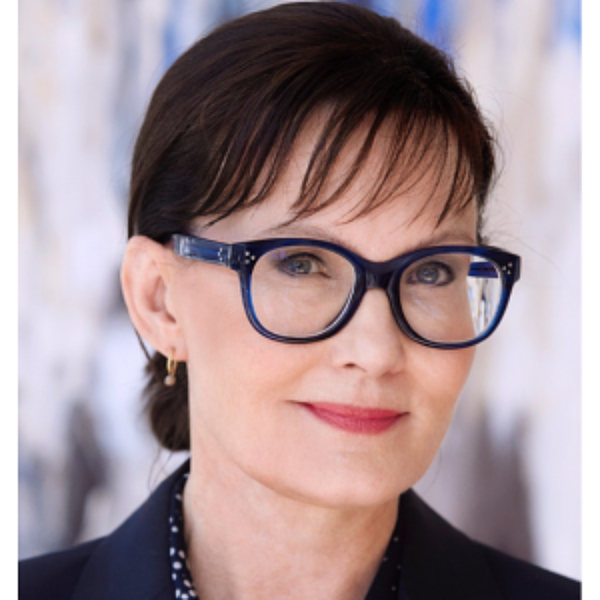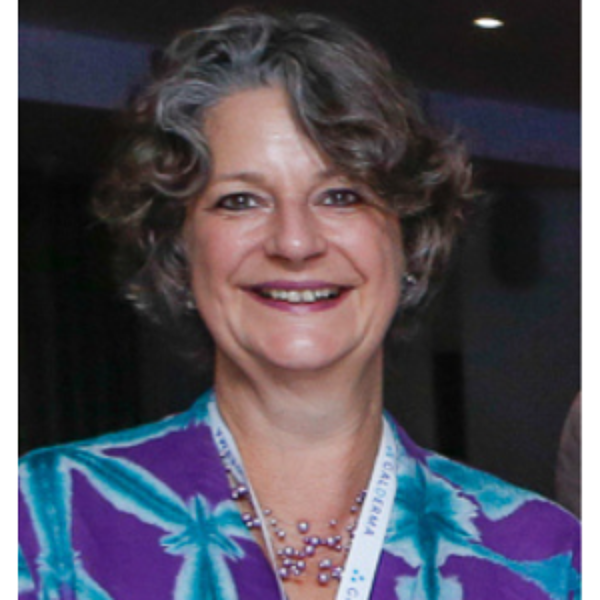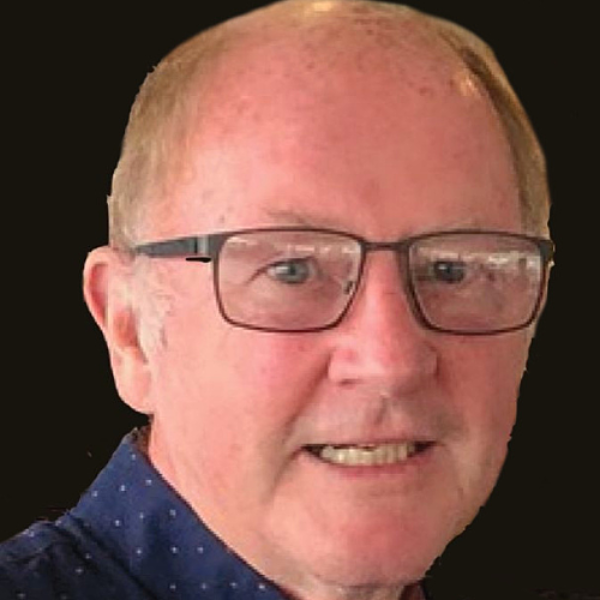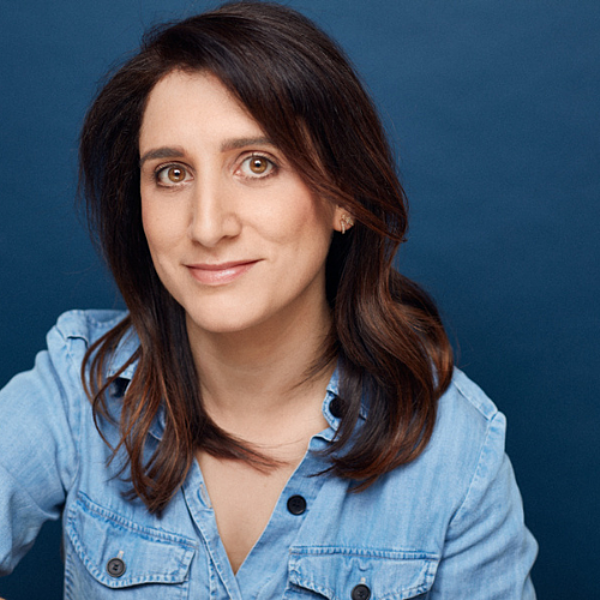
2025 SPEAKER PROGRAMME

2025 Session topics
Session 1: The blessing and curse of our sun – changing perception on the human health benefits of sun exposure, the continuing skin cancer pandemic, lessons learned from gold-standard national public education campaigns.
Session 2: On-going challenges to our UV filter palette – where are we?
Session 3: Changes in sunscreen testing and labelling… what can we expect?
Session 4: Change is here to stay! A vision of the future.
Speakers 2023

Dr Andrew Birnie
Consultant Dermatologist and Dermatological SurgeonEast Kent Hospitals University NHS Foundation Trust
KEYNOTE SPEAKER
The sun damage pandemic - Reporting from the Frontline
Biography
Andrew is a consultant dermatologist and Mohs micrographic surgeon in Canterbury, where he leads the skin cancer Multidisciplinary Team for East Kent. He attained pharmacology and medical degrees from the University of Bristol. Dermatology training took place in Nottingham followed by a Mohs fellowship in Cardiff.
He is a Fellow of the Royal College of Physicians in London and a member of the European Association of Dermato-Oncology, the Dermatologic and Aesthetic Surgery International League, in addition to the British Association of Dermatologists and British Society for Dermatological Surgery (BSDS).
In 2010 he spent a year in Durban, South Africa where he helped set up a skin cancer centre, offering free treatment for those who could not afford care, from which he trained the local dermatologists in both basic and advanced skin cancer surgery.
He launched Altruist Dermatologist Sunscreen in 2015 with the aim of reducing the incidence of skin cancer through the increased use of high-quality sunscreen. Since then Altruist has become the leading on-line sunscreen brand in the UK and facilitated the donation of over 100,000 tubes of sunscreen to people with albinism in Africa.Presentation Outline
Skin cancer is the most common cancer in the UK. Skin cancer referrals via the ‘urgent suspected cancer’ pathway outnumber any other suspected malignancy (1). The incidence of skin cancer continues to increase and, since the early 1990s, melanoma diagnoses have more than doubled (140%) in the UK (2). Recent data suggest that one in four (22·3%) men and one in six (17·5%) women will develop a Non-Melanoma Skin Cancer in their lifetime in England (3).
While the use of sunscreen is well established as a primary means to reduce the incidence of skin cancer, there are challenges faced by both clinicians and industry (both advocating its use) in convincing the public and regulators that they are safe and efficacious.
Dr Birnie will open the conference reflecting on this year's theme: “A Decade of Challenge – The Uncertain Future of Sun Protection” from his unique perspective as a consultant dermatologist, skin cancer lead clinician and creator of Altruist Dermatologist Sunscreen.
Topics to be covered include:
• The biology of the skin in response to UVR
• The consequences of UVR skin exposure
• The modern epidemic of skin cancer
• Public health messaging around sun protection
• The industry response to a changing social media, consumer and regulatory landscape.
References:
1. Public Health England National Cancer Registration Analysis Service. Cancer registration statistics: England 2021. Available at: https://www.cancerdata.nhs.uk/cwt_conversion_and_detection (last accessed 3 July 2023).
2. Cancer Research UK. Available at: https://www.cancerresearchuk.org/health-professional/cancer-statistics/statistics-by-cancer-type/melanoma-skin-cancer#heading-Zero (last accessed 3 July 2023).
3. M. Kwiatkowska et al. A summary of the updated report on the incidence and epidemiological trends of keratinocyte cancers in the UK 2013–2018. Br J Dermatol 2022; 186: 367-369.
Biography
Dr. Merete Haedersdal, MD, PhD, DMSc, is clinical professor of dermatology at University of Copenhagen and senior consultant at Dept of Dermatology, Bispebjerg University Hospital, Copenhagen, Denmark.
Professor Merete Haedersdal is Director and Head of Research at the “Danish Research Center for Skin Cancer”, a national public-private research partnership, https://reskca.org
She directs the Laser Dermatology Clinic at Bispebjerg University Hospital and is affiliated visiting scientist at Wellman Center for Photomedicine, Massachusetts General Hospital, Harvard Medical School, pioneering “laser-assisted drug delivery” together with Dr. R. Rox Anderson and his team.Professor Merete Haedersdal has published > 250 scientific papers and lectures internationally. Her research team focuses on translational medicine in the field of laser dermatology, fractional laser-assisted drug delivery, photodynamic therapy, and treatment of skin cancer with light-based devices.Presentation Outline
The aim of the Danish Research Centre for Skin Cancer is to improve patient outcomes, advance our knowledge in the field of skin cancer and contribute to the development of new therapies and interventions.
A key part of our work is the identification of patient-specific environmental, genetic and lifestyle risk factors that contribute to the development of skin cancers. As well, we are investigating prevention strategies including photoprotection (topical and oral) and rethinking how public health campaigns may be made more effective in educating and implementing risk-reduction strategies. The Danish Research Centre is conducting research in early detection of skin cancers including the use of urinary biomarkers as a means of understanding UV exposure. Finally, new treatment modalities such as laser-assisted drug delivery (LADD) are being used to improve patient outcomes and the emotional well-being of individuals.
Our goal is simple, we want to significantly reduce the incidence of skin cancer and improve people’s lives, beginning with the Danish population.
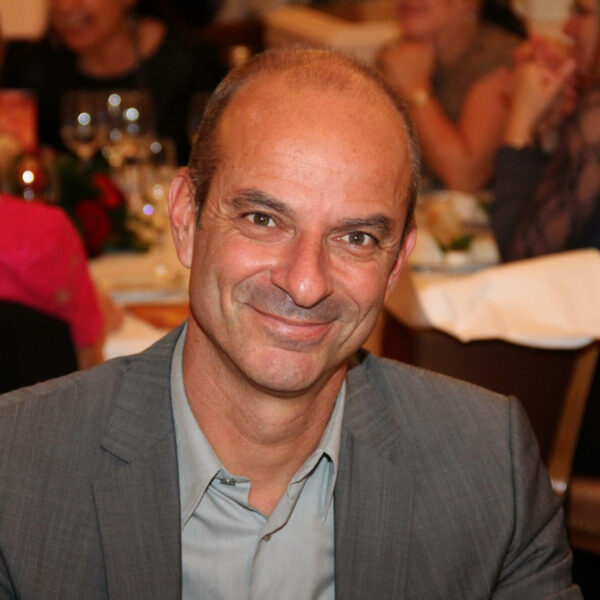
Dr Marc Pissavini
Sun Research & Innovation DirectorCoty
KEYNOTE SPEAKER
An extremely busy 2 years! A critical update on sun protection method development (Cosmetics Europe), characterisation (ALT_SPF Consortium) and standardisation (ISO)
Biography
Marc Pissavini is a renowned chemist with extensive experience in the field of photoprotection and method development. He completed his Ph.D. in chemistry and joined the Sun Research Department of Coty-Lancaster Group in 1998. As the head of the research laboratory, he is responsible for spearheading research in photoprotection and developing cutting-edge methods for evaluating the efficacy of suncare products.
One of Marc's major contributions to the field has been the development of methods for determining UVA and SPF protection in vitro. His work in this area has helped to improve the accuracy of sun protection factor testing and has contributed significantly to the development of new protocols. His research interests include also the effects of cream distribution on the skin and how this affects protection factors.
He frequently publishes articles in scientific journals and participates in conferences to promote innovation in the field of photoprotection. In addition to his research, Marc also holds several leadership positions within the cosmetics industry. He is the associate editor of the International Journal of Cosmetics Sciences, a peer-reviewed scientific journal that is ranked number 1 in its field.. He holds chairman positions for the Sun Protection Methodology Task force for Cosmetics Europe since 2012, where he has been instrumental in shaping the direction of research and development in the industry. He is currently the chair of the ISO TC217/ working group 7 – Sun protection test methods, where he continues to lead the development of new standards and protocols for evaluating the effectiveness of sun protection products.Presentation Outline
Despite numerous global prevention campaigns, warnings from dermatologists and health organisations, the number of skin cancers continues to rise, year on year. In addition to protective clothing, topical sunscreen products have become essential to complement this protection.
However, there remains some confusion around the use of and protection provided by these products - making it critical to choose and use the right method(s) to measure their protective efficacy.
Sun protection and screen products have always generated passionate debate. Because they are commercial technologies that are also closely linked to human health, a wide range of stakeholders participate in these discussions and contribute to the development of methods to assess their effectiveness.
This diversity of approaches can sometimes lead to unwanted confusion, with multiple voices in the conversation – including recommendations from authorities such as the European Commission, the ISO standards process and its on-going systematic reviews, the ALT_SPF Consortium on Alternative Methods, as well as other recommendations from Cosmetics Europe.
To help navigate this complexity, ensuring the appropriate method are applied to the right products, this presentation will update the conference on progress across three spheres of activity - covering current methods and also those likely to be studied / published in the near future.
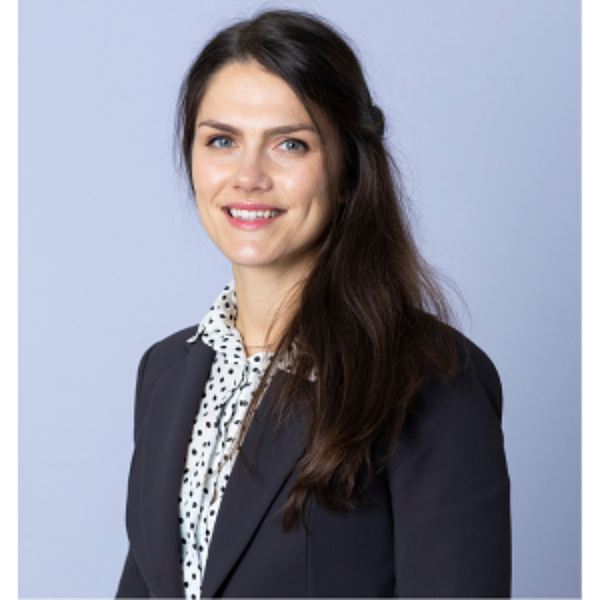
Dr Amelie Ott
Director, Environmental SciencesInternational Collaboration on Cosmetics Safety (ICCS)
SPEAKER
Busting myths and uncovering truths: environmental safety of sunscreens and UV filters
Biography
Dr Amelie Ott is an experienced scientist and scientific manager with a track record of leading international projects to assess the environmental safety of chemicals. She acts as the Director, Environmental Sciences at the International Collaboration on Cosmetics Safety (ICCS) where she is tasked with overseeing the strategic development and tactical management of their environmental science program. ICCS is a global, non-for-profit multi-stakeholder research organization dedicated to advancing animal-free safety assessments for cosmetics, covering human and environmental health.
Before this role, she worked at the European personal care trade association, Cosmetics Europe as an Environmental Sciences Manager and as a scientist at Newcastle University, co-leading the validation and standardization of a new biodegradation method. She also worked as a parliamentary researcher for the UK Parliament and as a scientific secretary consultant for the European Centre for Ecotoxicology and Toxicology of Chemicals (ECETOC). She is still a visiting researcher at Newcastle University, representing the UK in an OECD Expert Group. She is an active member of the Society of Environmental Toxicology and Chemistry (SETAC) and has recently published a special issue on UV filters as an invited co-editor for the International Journal of Cosmetic Science. She holds a Ph.D. in environmental engineering on emerging contaminants from Newcastle University.Presentation Outline
When sunscreens are applied to the skin, their ingredients including UV filters can enter the environment via different pathways such as from incompletely treated wastewater effluents or wash-off from swimmers. Even though UV filters are functionally similar, their structural features are very diverse, determining their individual environmental behaviour. As such, several UV filters have been detected in multiple water sources around the world including in aquatic organisms such as corals.
This presentation will address:
· How does an environmental safety assessment for cosmetics such as sunscreens work?
· Who and why are stakeholders concerned about the environmental safety of some UV filters?
· How do UV filters behave in the environment?
· Why are coral reefs declining and how are UV filters linked- or not linked- to this effect?
· What are the data gaps and how are we filling them?
· How can we provide sun protection, safe for both humans and the environment?
Biography
Chris Griffiths is Emeritus Professor of Dermatology, University of Manchester, Adjunct Professor, King’s College London and a Consultant Dermatologist, King’s College Hospital. He qualified in medicine from St Thomas’ Hospital Medical School, and trained in dermatology at St Mary’s Hospital and the University of Michigan. In 1994 Chris was appointed to the Foundation Chair in Dermatology at the University of Manchester and founded the Manchester Dermatopharmacology Unit and the Manchester Psoriasis Service. In 2015, he received the Sir Archibald Gray Medal for outstanding service to British Dermatology, and in 2019 the BSID Medal for contributions to research. In 2018, Chris was appointed OBE “for services to dermatology” in the Queen’s New Year Honours. He is an NIHR Emeritus Senior Investigator and a Fellow of the Academy of Medical Sciences.
Chris is a former President of the European Society for Dermatological Research, the European Dermatology Forum, the British Association of Dermatologists (BAD), and the International Psoriasis Council, which he co-founded in 2004. He is also Director of the MRC stratified medicine consortium on psoriasis (PSORT), Director of the Global Psoriasis Atlas, and was Chief Investigator of BADBIR from 2007-2022. Chris has 774 PubMed-cited articles (h-index 140) and is Editor-in-Chief of Rook’s Textbook of Dermatology and Rook’s Dermatology Handbook.
Chris has a career-long interest in all aspects of psoriasis and was part of the team that showed psoriasis to be an immune-mediated disease. Whilst in Michigan he elucidated the mechanism of action of topical retinoids for the management of aged skin and maintains a strong research interest in mechanisms of skin ageing. He runs international courses on art appreciation for clinicians and is active in global health initiatives, including co-founding the Burma Skincare Initiative charity and acting as advisor on global health research and policy to the International League of Dermatological Societies.Presentation Outline
Presentation outline coming soon!
Biography
Dr Claire Fuller is a consultant dermatologist in London UK. She chairs the International Foundation for Dermatology and is a board member of the International League of Dermatological Societies. She is a medical dermatologist with interest in infectious and tropical dermatoses as well as preventing and managing skin cancer in persons with albinism in the resource poor settings of the tropics. She is on the leadership team of the Neglected Tropical Disease NGO Network Skin NTD Cross Cutting Group and is founder and Vice Chair of the newly formed GLODERM (International Alliance for Global Health Dermatology) as well as the International Alliance for the Control of Scabies (IACS). She has field experience in UK, East Africa, India, Mexico and Cambodia. This has included projects involving advocacy, teaching, service development and research assignments.
Presentation Outline
In the context of life threatening photo dermatoses, genetic risk factors which make skin cancer an inevitability and living in resource limited tropics where one’s only possible livelihood is subsistence farming, effective photo protection is potentially life saving.
Understanding the global health impact of occupational tropical sun exposure on life expectancy as well as life quality in vulnerable communities provides a challenging and alternative priority for the sun protection industry to consider. Effective sunscreens in such a context should be considered an essential medicine. Can we persuade the International Health Agencies to categorise as such?
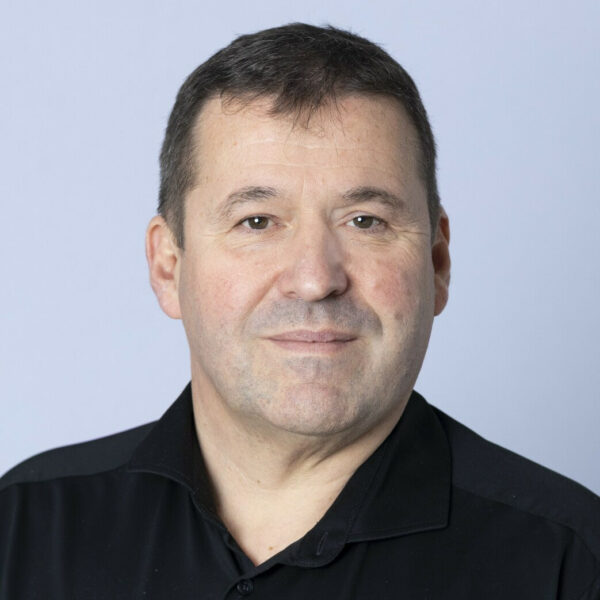
Dr Gerald Renner
Director Technical Regulatory & International AffairsCosmetics Europe - The Personal Care Association
SPEAKER
Regulatory renewal: Cosmetic vs Drug vs Medical Device… what has worked so far and what will work in the future? Dr Gerald Renner, Director Technical Regulatory & International Affairs, Cosmetics Europe
Biography
Dr Gerald Renner was born in Graz (Austria) in 1967. His basic scientific training is in engineering chemistry at the Technische Universität Graz, where he graduated in 1993. After that he specialised in biochemical engineering and worked for his PhD at the Technische Universität Graz, and the Ecole Polytechnique de Montréal. He finished his doctoral studies on the bacterial production of biodegradable plastics in 1996.
After additional courses in animal cell culture techniques and immunology at the Université Libre de Bruxelles, he joined Colipa’s (now Cosmetics Europe) Scientific Department at the end of 1996.
Since 2001 he is Cosmetic Europe’s Director of Technical Regulatory Affairs which includes since 2010 also the association’s activities on international regulatory convergence.
Main areas of responsibility:
• Development of Cosmetics Europe’s technical regulatory input to the EU Chemicals Strategy for Sustainability and the upcoming revision of CLP, REACH and Cosmetics Regulation.
• Regulatory issues and questions arising from the application of the EU Cosmetics Regulation and its technical adaptations,
• Interpretation of the borderline of cosmetics to other EU legislations (e.g. medicinal products, chemicals, biocides, ...).
• Convergence of international cosmetic legislations in key regions, removal of barriers to international trade, developments of international standards (ISO) and collaboration with international sister associations.
• Guidance to CE members on the implementation of the new Chinese Cosmetics legislation (CSAR)Presentation Outline
Due to their nature and intended function, products providing UV protection (be they ‘beach products’ or day care products) are difficult to assign to clear-cut regulatory categories, such as ‘cosmetics’ or ‘drugs’.
Various jurisdictions have addressed the issue in different ways, often by using some form of intermediate regulatory category and hybrid approach. From an international perspective, these approaches are often not compatible with each other, leading to fragmentation in terms of market access. Unlike other cosmetic and personal care products, it is difficult (impossible?) to market ‘international UV protection products’ due to differences in approved UV filters, mandatory manufacturing standards and acceptable claims / claim substantiation methods. As a result, international trade in sun protection products is difficult and consumers in many countries do not have access to the latest innovations and highest-performing UV protection products.
This presentation will review the strengths and weaknesses of different regulatory approaches and explore if there could be a future globally-unified ‘best regulatory practice’ to manage the safety, quality and efficacy of UV protection products.
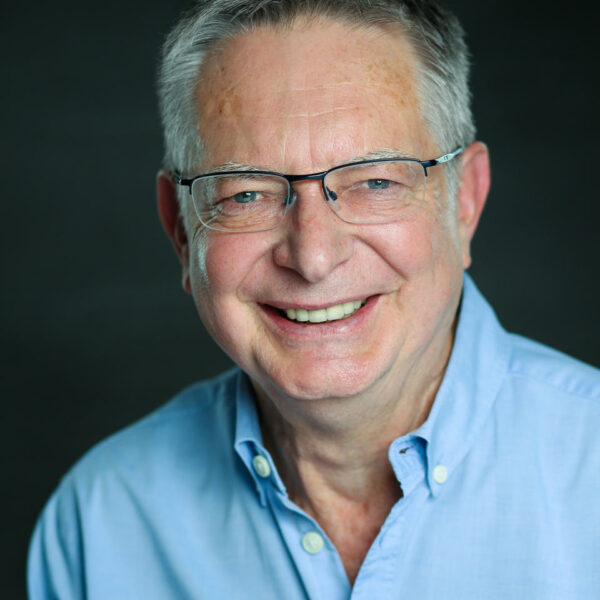
Professor Antony R Young
Emeritus professor of experimental photobiologySt. John's Institute of Dermatology / King's College London
SPEAKER
Beneficial health effects of UVR exposure: How to get a happy medium
Biography
Antony Young is emeritus professor of experimental photobiology at St John’s Institute of Dermatology, King’s College London, London, UK. He has a long-standing research history on the adverse and beneficial roles of solar ultraviolet radiation on human health. These include molecular and clinical outcomes such as DNA photodamage, vitamin D synthesis and photoimmunosuppression. Prof Young has also worked on photoprotection by melanin, synthetic sunscreens and, most recently on mycosporine like amino acids (MAA) which are natural sunscreens derived from algal species. He has also studied the effects of sunscreens in “real life” including their impact on vitamin D synthesis. These studies reflect an interest in public health as does Prof Young’s membership of the Environmental Effects Assessment Panel (EEAP) of the United Nations Environment Programme (UNEP).
Presentation Outline
Life evolved under exposure to sunlight. Primitive organisms developed sophisticated strategies to repair the damaging effects of solar ultraviolet radiation (UVR), but evolution also took advantage of sunlight with the development of photosynthesis in plants and vision in animals. Throughout most of my long career, skin photobiologists have focussed on the harmful effects of solar UVR because it is the main cause of skin cancer, the incidence of which continues to rise in most countries with white-skinned populations. This approach has been gradually changing over the last 20 or so years and there is now a much greater awareness of the benefits of solar exposure and more interest in the photobiology of pigmented skins.
The most obvious benefit is improved bone health from vitamin D synthesis, and we now know a lot more about the balance between the dose of UVR necessary for vitamin D in relation to its harmful effects. In brief, it is possible to achieve optimal vitamin D status with regular low UVR exposure that minimises long-term risk. Many health problems have a latitude gradient in which disease increases with distance from the equator; good examples are cardiovascular disease and multiple sclerosis. This has led researchers to investigate if such diseases are caused by lack of vitamin D and / or UVR. The jury is still out, but the evidence for beneficial health effects from solar UVR exposure is increasing. The ultimate goal will be to establish UVR dose requirements for benefit versus risk, bearing in mind that this will be different for different skin types.

Dr J Frank Nash
Senior Director, Research FellowProcter & Gamble, USA
SPEAKER
Are UV filters / sunscreen products hazardous to humans?
Biography
J Frank Nash, Ph.D., is Senior Director – Research Fellow in Global Product Stewardship at The Procter & Gamble Company. His primary responsibilities include the human safety assessment of topically applied cosmetic and nonprescription drug products. During his 30+ yrs at P&G, he has conducted multiple, in-depth toxicological evaluations of active ingredients/products and communicated such results with regulatory authorities across the world, e.g., US Food & Drug Administration (FDA) and Environmental Protection Agency (EPA), European Commission and their expert review committee (SCCS), European Chemicals Agency (ECHA) and China Ministry of Health.
Dr. Nash has expertise in dermal toxicology with a specialization in photobiology /phototoxicology having extensive knowledge of in vitro, animal, and human models and efficacy testing of sunscreen products. He has expertise in the human safety evaluation of light- and energy-based devices used for treatment of skin and hair. This includes experimental and conceptual expertise in the understanding of energy from lasers, radiofrequency, and microwave on skin and hair biology.
Finally, Dr Nash has chaired and served on toxicology working groups at multiple trade associations including the American Cleaning Institute (ACI), American Chemistry Council (ACC), Consumer Healthcare Products Association (CHPA), Personal Care Products Council (PCPC), Cosmetics Europe (CE) and Pharmaceutical Research Manufacturers Association (PhRMA). Presently, he is chair of the PCPC UV Filter Clinical/Preclinical safety consortium.Presentation Outline
There is no shortage of studies and opinions suggesting UV filters / sunscreen products may be hazardous to human health.
Because sunscreen products contain 2 or more UV filters and, depending on the region of the world, there may be up to 30 such chemicals, it is important to identify each active ingredient to avoid sweeping generalisations. In this regard, a careful toxicological assessment indicates that, among the 6 most commonly-used organic UV filters, i.e., avobenzone, homosalate, octisalate, octocrylene, octinoxate and oxybenzone, many of the alleged toxicological effects occur at concentrations or doses that are much higher than human use / exposure. For example, these UV filters have been evaluated in ToxCast / Tox21 in vitro assays as part of the US Environmental Protection Agency (EPA) screening program. These organic filters and their principal metabolites showed low bioactivity in assays measuring estrogen, androgen, thyroid and steroidogenic, i.e., EATS, activity. Except for oxybenzone, the bioactive concentrations were greater than the cytotoxic burst, a measure of cell death. The weak/negligible endocrine bioactivity for these UV filters is consistent with in vivo animal/human data. Finally, the bioactive concentrations of avobenzone, homosalate, octisalate, octocrylene and octinoxate are at least 100X higher than human plasma concentrations (Cmax) reported by US Food & Drug Administration (Matta et al. JAMA 2019, 2020) following full body 2 mg/cm2 application every 2 hours (4 times/day) over 4 days.
Beyond this specific example, there are other toxicological data for these 6 UV filters that clearly demonstrate a favourable margin of safety under conditions of use. The systematic conservative human risk assessments and the unequivocal benefit/risk of such products containing avobenzone, homosalate, octisalate, octocrylene, and octinoxate, alone or in combination, are not hazardous to humans. Nevertheless it is expected that the nonspecific, generalized assault on the human safety of sunscreen products/UV filters will continue.
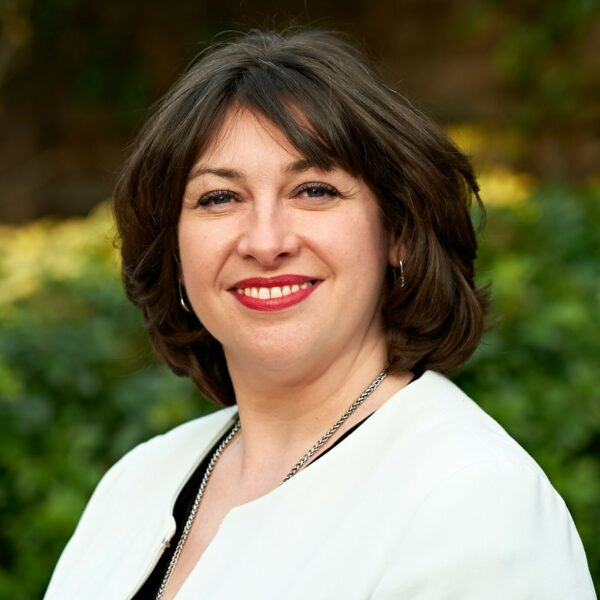
Dr Emma Meredith
DirectorGeneral, Cosmetic, Toiletry and Perfumery Association, UK
SPEAKER
The Future of Sunscreen Labelling
Biography
As Director-General, Emma is responsible for the strategic direction of CTPA (the Cosmetic, Toiletry and Perfumery Association). CTPA is the UK trade association for the cosmetics and personal care industry.
Emma acts as the public voice of the Association and leads on external stakeholder engagement; international relations; and on the Association’s ambitious Sustainability Strategy: Working Towards a net Positive Cosmetics Industry. Emma represents the CTPA on several committees at Cosmetics Europe, the European personal care association, including Board of Directors, the College of Active Association Members and the Strategic Advisory Group - Sun Protection.
Emma is a pharmacist by profession. After qualifying from King’s College London, she obtained her PhD in Pharmaceutical Chemistry from the University of Strathclyde in Glasgow, researching melanogenesis and malignant melanomas – specifically studying the chemistry of thiocarbamides as potential false precursors of melanin.
Emma worked as hospital pharmacist for seven years before joining CTPA in 2003 as Technical Information Officer. In her former role as Director of Science at CTPA, Emma was responsible for the full portfolio of scientific and technical work at the Association, dealing with many and varied ingredient issues and technical guidance on bringing a cosmetic product to the market.Presentation Outline
Our understanding of the effects of the sun has grown significantly over the 30 years the Sun Protection Conference has been held. This is reflected in the way we talk about sunscreens: from ‘suntan lotions’ to ‘sun protection products’. With that knowledge and the advancements in science and technologies have also come increased efficacy and functionality of sunscreens. This has been accompanied by a proliferation of ways in which we communicate sunscreen protection on-pack: UVA protection, water resistance, durability, levels of protection - and yet, we still use SPF numbers. As manufacturers, we know what the countless symbols and words mean. Can the same be said for our main priority - our consumers?
If we are facing an uncertain future of sun protection, this surely also applies to the labelling of sunscreens. What does the future hold for labelling – and, what should the future hold?
This presentation will challenge our thinking on sunscreen labelling; highlight the discussions at Cosmetics Europe, the European personal care association; start the debate on the future of sunscreen labelling.

Biography
Paul joined Procter & Gamble in 1988 as a PhD Microbial Biochemist and has spent the majority of his career leading various aspects of Skin Research, working across most of the Company's Operating Units (as he maintains that all of them touch human skin in some way!).
He is Visiting Professor to the London College of Fashion and a past Visiting Professor to the UCL School of Pharmacy. He is a past Chair of the Cosmetics Europe (CE) Sun Protection Methods Task Force, the current Chair of the CE Sun Protection Scientific Advisory Group and the UK expert to the ISO standardisation of SPF and UVA methods.
In his spare time, he re-applies his skin biology expertise to resource-poor settings and, in 2012, co-founded an NGO in Ethiopia to help the 1.5+ million sufferers of Podoconiosis (non-filarial, lower-leg lymphoedema).
He is married to Ali, has 3 grown-up children and is a recently a grandfather! He loves the outdoors… running, mountains, scuba-diving and, in 2013, bought an old, run-down property on the Isle of Mull which is a small piece of Heaven.Presentation Outline
Imagine if...
• … we balanced pragmatically the models, hypotheses and assays that shape the majority of current demands for data around UVR filters with the facts, data and first-person human testimony that document both the tragic effects of UVR skin damage and utility of sunscreens in consumers' hands.
• … we labelled sunscreens with the same stark simplicity applied to other lethal human safety hazards.
• … we developed and deployed progressive tax narratives that resulted in significantly lower-cost sunscreen products without disadvantaging the poorest consumer.
• … we provided free sunscreen products to young people in state schools.
• … we re-prioritised sun protection, considering not only the 120,000 who tragically die of UVR-induced skin cancer globally but also the 8 million who contract and then live with it, every year.

Sandra Browne
Director of International Regulatory ComplianceBrowne & Associates Consulting Ltd
SPEAKER
Navigating the key challenges of global UV filter regulations
Biography
In her current role out of offices in Dublin and New Jersey, Sandra provides consultancy support to large and small Companies to ensure they meet Regulatory compliance requirements for Cosmetics and OTC products for marketing in the US and EU markets. She defines compliance strategy and business risk and represents Industry to Governments and Retailers and provides advocacy through the Cosmetic Trade Associations. Her many years of experience includes managing Global Sun Products with a constant monitoring of Global UV filters and the challenges facing their very existence, something she is very passionate about.
She is currenting representing ICDA (Irish Cosmetic and Detergents Association) on several Cosmetic Europe’s SCT’s and SAG’s including the Strategic Advisory Group on Sun Products and has been a member of the Homosalate UV Consortia. She is the current Chairperson for the Cosmetic Advisory Group for CEN and ISO at NSAI (National Standards Authority of Ireland) in Dublin. For the past 6 years, she has lectured courses on ‘European Regulatory Compliance for the Personal Care Products Industry’ to US students for the Centre for Professional Advancement (CFPA) out of New Jersey.
For two years, prior to joining Edgewell back in 2010 as their Sr. Global Regulatory Manager, Sandra worked as a Regulatory Consultant for Europe specialising in Sun Products, Consumer Products, Biocides and REACH. She spent 22 years working for Hawaiian Tropic Europe Inc. Sun Products.Presentation Outline
My presentation will summarise the current state of play of Global regulation of UV filters and alert the audience to the huge headwinds facing our industry in the coming years. I will also look at the impact of the new Nano Definition, review Global Regulatory Labelling of SPF products and Efficacy Testing - to identify gaps and opportunities.
There is no doubt we will lose UV filters from several sources such as the European Commission’s Green Deal ‘Chemical Strategy for Sustainability (CSS)’ with risks from GRA (Generic Risk Assessment), MAF (Mixture Assessment Factor) and the concept of Essentiality; from Endocrine Disruptor and other CLP classifications; from ECHA’s additional environmental Testing, from the FDA’s assessment on Human Safety of UV filters; also from Environmental threats and scrutiny across the Globe, and finally Retailer Restrictions and Consumer perception.
The CSS includes an institutional commitment to present a new legislative proposal to amend the Cosmetic Products Regulation Regulation (EC) No 1223/2009, alongside the REACH and CLP Regulation, all of which will negatively restrict or ban the continued use of UV filters. Such restrictions will lead to a devastating impact on industry without any improvement of public health or consumer safety for these vital ingredients in Europe all of which will be followed by major Global regions. We therefore have a ‘big’ responsibility in Europe to highlight the negative impact to the Global Sun Industry.
40% of the UV filters may be classified as ‘human safety GRA substance’ – aimed at targeting the ‘most harmful categories, CMR’s Cat 1 carcinogenic, mutagenic and reprotoxic substance or as endocrine disruptor, Cat 1, despite several positive evaluations by the SCCS. Advocacy for proportionality is required.
The introduction of a so-called MAF to the Safety Assessment would re-classify 70% of the UV filters as unsafe. Banning UV filters simply due to GRA classification or the addition of an arbitrary additional safety margin would disregard a well- demonstrated high level of safety of UV filters and their important contribution to public health.
More than ever, we need to track the Global Regulatory landscape and defend each and every UV filter, as we cannot easily replenish with new ingredients! We must be able to maintain our already small palette of filters in Europe and Rest of World, enabling our industry to continue to provide the vital health preserving protection products needed by consumers worldwide. Advocacy and Lobbying has never been as high a priority to avoid skin cancer and worse, death, as there are simply no alternatives.

Dr Mathias Rohr
DirectorInstitute Dr Schrader, Germany
SPEAKER
ISO Method Development #1: HDRS (Hybrid Diffuse Reflectance Spectroscopy) – a window of opportunity
Biography
Mathias Rohr studied physics and bio-physics at the University of Göttingen / Max Planck Institute (MPI) für Strahlenchemie/Mülheim-Ruhr Germany. He has been an employee at Institute Dr. Schrader in Germany since the early 90’s. For over 3 decades, he has been involved in the development of biophysical devices and test methods in the field of skin physiological testing. In particular, the interaction of light and skin has been a fundamental aspect of his clinical research history.
Besides classical SPF testing, his daily work has also focused on the research and development of a variety of novel techniques, such as LIOAS (Laser Induced Opto-Acoustic Spectroscopy), Photoacoustic Spectroscopy of Sunscreens, NIR-RS (Near InfraRed Remission Spectroscopy), Skin surface analysis by FOITS (Fast Optical In vivo Topometry of Human Skin), ICL-S (Induced ChemiLuminescence of Human Skin to investigate Oxidative Protection in vivo) and, finally, HDRS (Hybrid Diffuse Reflectance Spectroscopy).
He is a member of several active cross-industry teams, including ISO WG7 (developing international Sun Protection test methods), CEN, DIN and the sunscreen working group of the German Society for Scientific and Applied Cosmetics (DGK), all working on the international standardisation of sunscreen testing methods and possible alternatives.Presentation Outline
For decades, testing the in vivo SPF of a sunscreen has been performed by provoking an ethically-questionable erythemal reaction in volunteers’ skin (more recently, using the now well-known standard method ISO 24444). For the last decade, an alternative approach - HDRS – has been developed to circumvent this ethical challenge, offering a reliable and comparable test method to deliver a trustworthy in vivo SPF. Reflectance measurements on the skin in combination with in vitro transmission measurements offer the possibility of a direct measurement of SPF and UVA-PF in one step.
During the development process, challenges such as variable formulation type, different filter systems including organic and / or non-organic filters have had to be considered. On the one hand, photo-stability and water resistance and, on the other, inter-laboratory utility have also needed to be addressed, in the journey towards equivalency to ISO24444 results. After all this efforts, HDRS is on its way to become a new alternative standard (ISO 23698) in a trustworthy future of SPF testing.
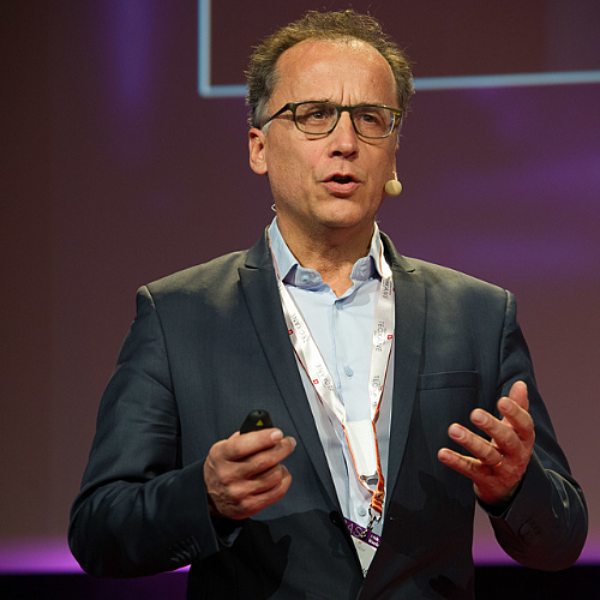
Dominique du Crest
Co-founderSkin & Digital Summit
SPEAKER
UV filters are the vehicle… but data is the fuel…!
Biography
In one word: skin addict!
Skin is fascinating! Skin is the silent mirror of important systemic disorders (compromised skin) and the mirror of external concerns (healthy skin and ageing skin). Skin encompasses diverse fields of study, including rigorous sciences like medicine and biology, as well as softer sciences like psychology, sociology, and anthropology. Moreover, skin acts as a gateway for embracing the applications of today's digital revolution, such as artificial intelligence, large language models, the internet of things, social media, machine learning, big data, …
Within the broad scope of the "skin business", sub-optimal access to care and misinformation are the major issues and opportunities this industry is facing. Although algorithms will not replace physicians, digital technologies have a role to play to solve these issues.
Co-founder of the Skin & Digital Summit. The Vision of the Skin & Digital Summit is to create and facilitate a comprehensive conversation about what advances in digital technology & artificial intelligence can bring to the skin business at large (dermatology, aesthetics, skincare).
https://www.skindigitalsummit.com/Presentation Outline
This presentation explores how digital technologies, particularly in photoprotection, are transforming the skincare industry. It emphasizes the importance of data in improving products and personalizing experiences, discussing the use of AI, mobile apps, wearable UV sensors and IoT in skin and sun care. The impact of social media about public health in the domain of photoprotection and tanning will be also discussed. Additionally, it examines the challenges in making these technologies widely accessible, aiming to reduce the digital divide with great example coming from India. The overall focus is on the critical and transformative role of digital advancements in skincare and photoprotection, while acknowledging that significant societal challenges still remain.
Biography
John comes from a background of 60 years of experience in the pharmaceutical and health care industries, mostly spent in R&D-related roles. He left his final position as General Manager in the pharmaceutical manufacturing industry to become a consultant where he has spent the last 35 years.
He has won the prestigious Jack Jacobs award for best Australian / New Zealand cosmetic research on four occasions, including at the Cairns Australia 2015 Conference of the Asian Societies of Cosmetic Scientists. In 2022, he was presented with the award of IFSCC Fellow by the International Federation of Societies of Cosmetic Chemists. John is also a Past President and Life Member of Australian Society of Cosmetic Chemists.
John retired as Managing Director of Eurofins | Dermatest based in Sydney, Australia in June 2019, but, as well as running his own consultancy, John is currently Australian Head Delegate representative to the ISO Committee on Sunscreen Testing under ISO Technical Committee 217 – Cosmetics and Leader of the ISO Working Group on Sunscreen Water Resistance.Presentation Outline
This presentation will provide potted history of the timeline of sun protection and our endeavours to advance the approach to formulating, testing and regulation over the last 30 years - where we have got things right… and where we have got this “horribly wrong.” We will explore some of the myths related to our science. We will compare our objectives with our achievements and attempt to focus on what direction to take in the future, both pro-actively or reactively.
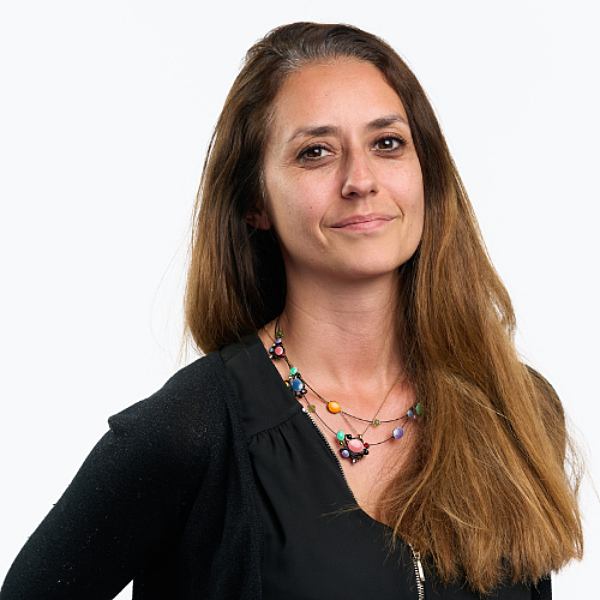
Florence Pouradier
International Manager in Instrumental and Clinical Evaluation - PhotoprotectionL'Oréal SA
SPEAKER
ISO Method Development #2: The Double-Plate Method (ISO/CD 23675) - a full in vitro method to properly tackle all the challenges posed by current SPF assessment
Biography
Florence Pouradier works in the Research and Innovation department of L'Oréal SA, with 16 years' experience in evaluating the performance of cosmetic products. During her career, she has explored a wide range of sensory, clinical and instrumental methodologies, in various fields of application from Hair & Scalp Care to Photoprotection.
As a graduate of ESPCI-Paristech (an engineering and research school proud of its 6 Nobel Prize winners), Florence has developed a strong taste for multidisciplinary science. Over the years she has passionately developed a wide range of collaborations with specialists in Analysis, Microbiome, Proteomics, Instrumental Physics, Photobiology, Pharmacy and Dermatology. This curiosity for broad science is also expressed in her topics of study: from exploring the physiology of human skin and hair in all its diversity, and the disfunctions that affect it, to the benefits provided by cosmetic products, via the development of measurement methods.
Heir to a line of renowned researchers (Dominique Moyal, Caroline Tricaud) and supported by an outstanding team, Florence is the spokesperson for L'Oréal's expertise in photoprotection measurement methods for the past 3 years. As an AFNOR and ISO expert, she plays an active role in WG7, developing the sun protection standards of today and tomorrow. As a member of Cosmetics Europe's SPM working group, she takes an active part in the collaborative work on the SPF in vitro Double-Plate method, for which she is also the method-leader within the ALT-SPF Consortium.Presentation Outline
Because sunscreens play an important role in the prevention of skin cancer, their performance is expressed globally through standard indices (SPF, UVA-PF), determined via harmonised, standardised methods.
While today the reference method for determining SPF is based on in vivo measurements, the cosmetics industry has been working for years on the development of alternative methods. Indeed, such development is encouraged by the European Commission and many Dermatologists globally, since it would provide a variety of advantages, namely (i) the avoidance of human testing, (ii) improved repeatability and reproducibility, especially through elimination of technical-challenging procedures, (iii) more amenable to continuous improvement and (iv) improved speed and cost, driving an accelerated innovation process.
This presentation will discuss how the SPF In Vitro Double Plate method, the result of over 15 years' of development and optimisation work by COLIPA / Cosmetics Europe's Sun Protection Measurement Task Force and which could be published as an International Standard (ISO23675) in early 2025, provides ready answers to each of these challenges.
Biography
Claire Coleman is a communications consultant helping companies clearly communicate their message so that, in a crowded field, consumers, press and influencers understand what a brand stands for, what makes it different, and why they should buy into it. Whether creating website content, writing press releases, advising on brand strategy, or training individuals in how to engage with the media, her work leverages more than 20 years of experience as an award-winning freelance journalist and editor, contributing to a number of national newspapers and magazines, including the Daily Mail, the Daily Telegraph, Metro, Red and Fabulous. Her aim, as a journalist, is always to engage her NASA scientist father with the rigour with which she tackles scientific concepts, but also make her copy appealing for her mother, an actress who switches off at the mention of the word "molecule" and just wants to know how to get rid of her wrinkles. Previous consultancy work includes projects for Johnson & Johnson, PZ Cussons, P&G, Elemis, Byoma, and the L’Oréal group, and she is currently retained as marketing and communications consultant for the Society of Cosmetic Scientists.
Presentation Outline
Participating Panellist
